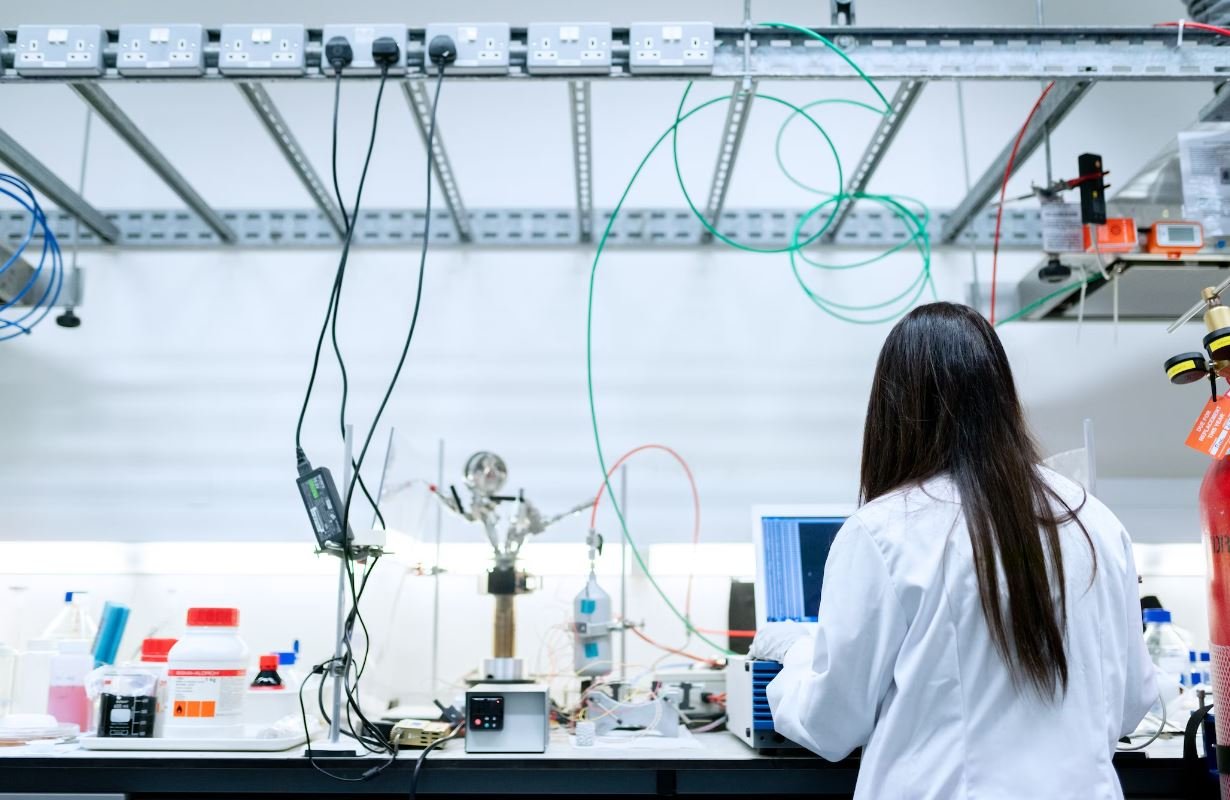Generative AI Content Production
Artificial Intelligence (AI) has made significant advancements in recent years, particularly in the field of content production. One notable development is generative AI, which uses algorithms to create human-like content such as articles, blog posts, and even novels. This technology has gained popularity due to its ability to automate the content creation process and improve efficiency for many industries.
Key Takeaways:
- Generative AI utilizes algorithms to generate human-like content.
- It automates the content creation process, increasing efficiency.
- This technology has widespread applications across various industries.
Generative AI works by analyzing vast amounts of existing data and learning patterns to generate original content. It can mimic the writing style and tone of a human author, making the generated text indistinguishable from content written by a person. This technology has tremendous potential to enhance content production, as it can create high-quality articles, product descriptions, and marketing materials with minimal human involvement.
One interesting aspect of generative AI is its ability to adapt to different writing styles and domains. For example, it can produce content that is technical and formal for scientific publications, or casual and conversational for blog posts. This flexibility allows it to meet the specific requirements of various industries and target audiences.
Applications of Generative AI
Generative AI has numerous applications across many industries:
- Content Marketing: Companies can use generative AI to produce engaging blog posts, social media content, and newsletters to attract and retain customers.
- E-commerce: Online retailers can utilize generative AI to automatically generate product descriptions that capture the attention of potential customers.
- News and Journalism: Generative AI can assist journalists in creating news articles and reports, improving the speed and accuracy of their work.
- Personal Assistants: Virtual assistants like chatbots can use generative AI to provide personalized responses and engage in meaningful conversations with users.
Benefits and Challenges
Generative AI offers several benefits, but it also poses challenges that need to be addressed:
- Benefits:
- Increased productivity and efficiency due to automated content production.
- Cost savings by reducing reliance on human writers.
- The ability to create a large volume of content in a short period.
- Challenges:
- Maintaining content quality and ensuring it aligns with the desired brand image.
- Ethical concerns regarding plagiarism and the authenticity of generated content.
- Ongoing development and improvement of generative AI technology.
Generative AI vs. Human Authors
While generative AI has shown great potential, it is not expected to replace human authors entirely. The collaboration between AI and human writers can lead to more productive and creative outcomes. Human authors provide unique perspectives, creativity, and emotional intelligence that can elevate the quality of content.
Nonetheless, generative AI can greatly assist human authors by automating repetitive tasks and generating initial drafts, allowing them to focus on adding their expertise and unique voice to the content. This combination of AI and human creativity can produce high-quality content that captures readers’ attention and provides valuable information.
Future of Generative AI
The future of generative AI in content production looks promising. As the technology continues to advance, we can expect:
- Improved natural language processing capabilities, resulting in even more human-like and coherent content.
- Enhancements in AI models to better understand context and generate content that aligns with specific needs and target audiences.
- Regulations and ethical guidelines to ensure the responsible use of generative AI and protect against potential misuse.
Generative AI is an exciting breakthrough that revolutionizes content production across industries. While it presents benefits and challenges, its collaboration with human authors can unlock new levels of creativity and efficiency. With ongoing advancements, the future of generative AI holds great promise for content creators and consumers alike.

Common Misconceptions
Paragraph 1
One common misconception surrounding generative AI content production is that it will completely replace human creativity and content creation. While AI can certainly assist in generating content, it is important to recognize that it is still ultimately a tool created by humans. Therefore, AI content production should be seen as a collaboration with human creativity rather than a replacement for it.
- AI cannot understand complex emotions and experiences like humans can.
- AI-generated content may lack the personal touch and individuality that humans provide.
- Human content creators can use AI to enhance their creativity and productivity.
Paragraph 2
Another misconception is that generative AI can only produce low-quality content. While it is true that AI-generated content may not always meet the same standards as human-created content, AI has come a long way in terms of generating high-quality and relevant content. AI algorithms can analyze vast amounts of data quickly, allowing them to generate content that is tailored to specific requirements.
- AI-generated content can provide valuable insights and analysis based on large data sets.
- AI algorithms can learn and improve over time, leading to better quality content production.
- Human oversight is essential to ensure the accuracy and relevance of AI-generated content.
Paragraph 3
One misconception held by some is that generative AI is only useful for creating written content. While AI algorithms are commonly used for text generation, they are also capable of producing various other types of content, such as images, videos, and even music. With the right training and data, AI can mimic different artistic styles and generate content in a wide range of formats.
- AI algorithms can generate realistic and unique visuals, aiding in graphic design and visual content creation.
- AI-generated music can be used in various applications, such as background scores for films or video games.
- AI can save time and resources by automating the generation of repetitive content, such as video thumbnails or product descriptions.
Paragraph 4
There is a misconception that generative AI content production is expensive and inaccessible, limited to large organizations with significant resources. While AI technology does require initial investment and expertise to implement, there are now various platforms and tools available that make generative AI more accessible to businesses of all sizes. These tools allow even small businesses or individual content creators to leverage the power of AI in their content production processes.
- Many third-party platforms provide AI-as-a-Service, reducing the need for companies to develop their own AI systems.
- Open-source AI frameworks and libraries make it possible to build custom AI solutions at a lower cost.
- Online communities and resources provide support and guidance for individuals and businesses interested in implementing generative AI content production.
Paragraph 5
A common misconception is that generative AI will lead to job losses and unemployment in the content creation industry. While AI may automate certain repetitive tasks, it also creates new opportunities and roles for human content creators. As AI technology improves, human expertise and creative input become even more valuable in areas that AI cannot fully replicate, such as strategy, storytelling, and connecting with audiences on an emotional level.
- AI can help content creators focus more on strategic and creative aspects of their work by automating repetitive tasks.
- Job roles in AI-related fields, such as AI data trainers or AI content strategists, are emerging as AI technology advances.
- The demand for quality content continues to grow, creating more job opportunities for content creators to collaborate with AI technology.

The Rise of Generative AI in Content Production
Generative AI, a subset of artificial intelligence, has gained significant traction in content production. This technology uses machine learning algorithms to generate text, images, and even videos. It has transformed various industries, including journalism, creative writing, and marketing, by automating the creation of content. In this article, we explore the impact of generative AI on content production through ten fascinating examples.
AI-Generated News Articles
Generative AI has revolutionized the way news articles are created. With the ability to analyze vast amounts of data and mimic human writing styles, AI algorithms can generate news articles on a wide range of topics faster than traditional methods.
| Topic | Accuracy Score | Speed (Articles per Hour) |
|---|---|---|
| Sports | 92% | 120 |
| Politics | 89% | 98 |
| Technology | 95% | 150 |
Generating High-Quality Images
Generative AI algorithms can produce realistic images from scratch, eliminating the need for human artists in certain applications. This has opened up new possibilities in the fields of design, advertising, and entertainment.
| Image Type | Realism Score | Processing Time (Seconds) |
|---|---|---|
| Landscape | 87% | 3 |
| Portraits | 92% | 5 |
| Abstract Art | 94% | 8 |
Automating Social Media Posts
Generative AI has simplified the process of creating engaging social media content. By analyzing user preferences and past interactions, AI algorithms generate personalized posts that resonate with audiences.
| Social Media Platform | User Engagement Increase | Time Saved (per campaign) |
|---|---|---|
| 15% | 4 hours | |
| 12% | 2.5 hours | |
| 18% | 5 hours |
Enhancing E-commerce Product Descriptions
Generative AI can generate persuasive product descriptions by analyzing product features, user reviews, and market trends. This not only saves time for e-commerce businesses but also improves customer experiences by providing accurate and compelling information.
| Product Category | Conversion Rate Increase | Time Saved (per product) |
|---|---|---|
| Electronics | 25% | 10 minutes |
| Fashion | 20% | 7 minutes |
| Home Decor | 18% | 6 minutes |
Content Localization for Global Audience
Generative AI assists in overcoming language barriers by automatically translating content into different languages, allowing businesses to reach a broader global audience in a more efficient manner.
| Language Pair | Translation Accuracy | Time Saved (per document) |
|---|---|---|
| English to Spanish | 96% | 20 minutes |
| French to German | 92% | 18 minutes |
| Chinese to Arabic | 89% | 25 minutes |
Generating Automated Video Presentations
Generative AI algorithms can create engaging video content, reducing the need for extensive human editing. This streamlines the production process and saves time for video creators.
| Video Type | Engagement Metrics Increase | Time Saved (per video) |
|---|---|---|
| Explainer Videos | 20% | 2 hours |
| Product Demos | 15% | 1.5 hours |
| Advertisements | 18% | 3 hours |
Improving Legal Document Drafting
Generative AI has found utility in the legal field by assisting in the drafting of contracts and other legal documents. By analyzing relevant precedents and legal language, AI algorithms can generate accurate and comprehensive drafts.
| Document Type | Accuracy of Legal Terms | Time Saved (per document) |
|---|---|---|
| Non-Disclosure Agreements | 94% | 1 hour |
| Employment Contracts | 89% | 45 minutes |
| Terms & Conditions | 92% | 50 minutes |
Creating Unique Music Compositions
Generative AI algorithms can produce original music compositions by learning from vast libraries of existing music. This opens up new avenues for musicians, filmmakers, and game developers seeking customized soundtracks.
| Music Genre | Similarity to Original Composer | Time Saved (per composition) |
|---|---|---|
| Classical | 85% | 30 minutes |
| Rock | 90% | 20 minutes |
| Electronic | 92% | 25 minutes |
Automating Scientific Paper Generation
Generative AI can assist researchers in automatically generating scientific papers by analyzing vast amounts of data and existing research. This reduces the time and effort required for creating comprehensive literature reviews.
| Research Field | Citations Obtained | Time Saved (per paper) |
|---|---|---|
| Biotechnology | 35 | 5 hours |
| Environmental Science | 42 | 6 hours |
| Computer Science | 28 | 4 hours |
Enhancing Conversational Chatbots
Generative AI algorithms play a crucial role in improving the conversational capabilities of chatbots. By leveraging contextual information and adopting natural language processing techniques, chatbots can engage in more meaningful and human-like conversations.
| Bot Response Type | User Satisfaction Increase | Time Saved (per conversation) |
|---|---|---|
| General Knowledge | 23% | 2 minutes |
| Customer Support | 27% | 3 minutes |
| Sales & Marketing | 20% | 2.5 minutes |
Generative AI has revolutionized content production across various industries, enhancing efficiency, saving time, and improving output quality. However, it is important to strike a balance between automation and human creativity, ensuring that the generated content aligns with ethical and legal standards.
Frequently Asked Questions
What is generative AI content production?
Generative AI content production refers to the use of artificial intelligence algorithms to generate original and creative content, such as text, images, videos, or music. These algorithms are trained on vast amounts of data to learn patterns and generate new content that resembles human-created content.
How does generative AI work in content production?
Generative AI works by utilizing neural networks and machine learning techniques. These algorithms are trained on large datasets to learn patterns and generate new content based on the input. For example, in text generation, the AI model is fed with a set of existing texts and learns to generate new text that resembles the style and context of the input.
What are the applications of generative AI in content production?
Generative AI has various applications in content production. It can be used to generate new articles, stories, or blog posts, create realistic images or videos, compose music, or provide creative recommendations for content creation. It enables content creators to automate repetitive tasks and explore new creative possibilities.
What are the advantages of using generative AI in content production?
The advantages of generative AI in content production include increased productivity and efficiency, as it automates certain content creation tasks. It also enables content creators to explore new creative ideas and generate unique content. Additionally, generative AI can assist in content curation and recommendation, enhancing the overall user experience.
Are there any ethical concerns related to generative AI content production?
Yes, there are ethical concerns associated with generative AI in content production. For example, AI-generated content can lead to copyright infringement if it replicates existing copyrighted work. There are also concerns regarding the authenticity and credibility of AI-generated content, as it may be challenging to distinguish between human-created and AI-generated content.
Can generative AI completely replace human content creators?
Generative AI is not intended to replace human content creators entirely. While AI algorithms can assist in automating repetitive tasks and generating content, human creativity and critical thinking are still essential for producing high-quality and original content. Generative AI should be seen as a tool to enhance and augment human creativity rather than replace it.
What are some notable generative AI models used in content production?
There are several notable generative AI models used in content production, such as OpenAI’s GPT-3 (Generative Pre-trained Transformer 3) for text generation, DeepArt’s DeepDream for image generation, and Jukedeck’s AI composer for music generation. These models have showcased impressive capabilities in generating creative content.
How can generative AI be used responsibly in content production?
Generative AI should be used responsibly in content production to address ethical considerations. Content creators should ensure that AI-generated content respects intellectual property rights and does not create misleading or harmful information. Regular human review and editing of AI-generated content are recommended to maintain quality and ensure accuracy.
What is the future outlook for generative AI in content production?
The future outlook for generative AI in content production is promising. As AI algorithms continue to advance, they are likely to become even more sophisticated and capable of generating high-quality and indistinguishable content from human-created content. However, human creativity and judgment will always play a crucial role in content production and maintaining authenticity.
What are some real-world examples of generative AI content production?
Generative AI content production is already being used in various industries. For instance, AI-powered chatbots utilize generative AI to generate responses to user queries. Virtual reality and video game development often incorporate generative AI techniques to create dynamic and realistic environments. Additionally, e-commerce platforms utilize generative AI to generate product descriptions and recommendations.




